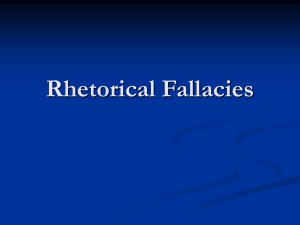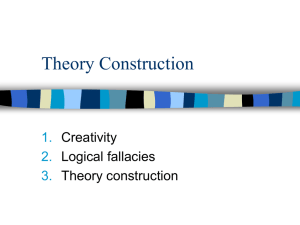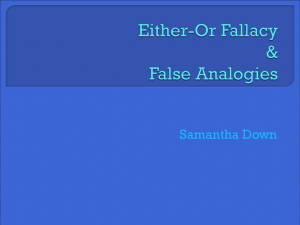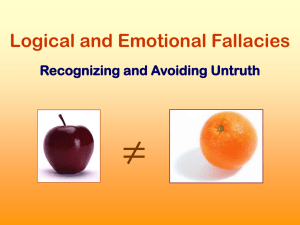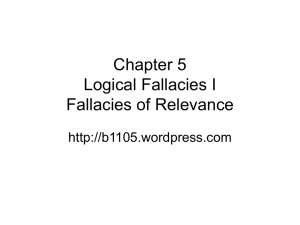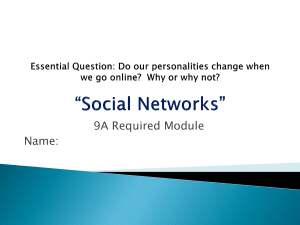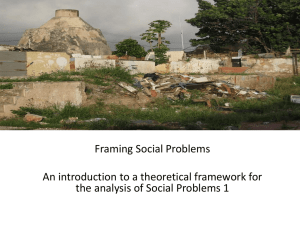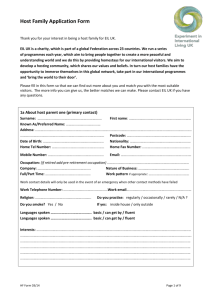Learning and using English as an International Language in ESP
advertisement
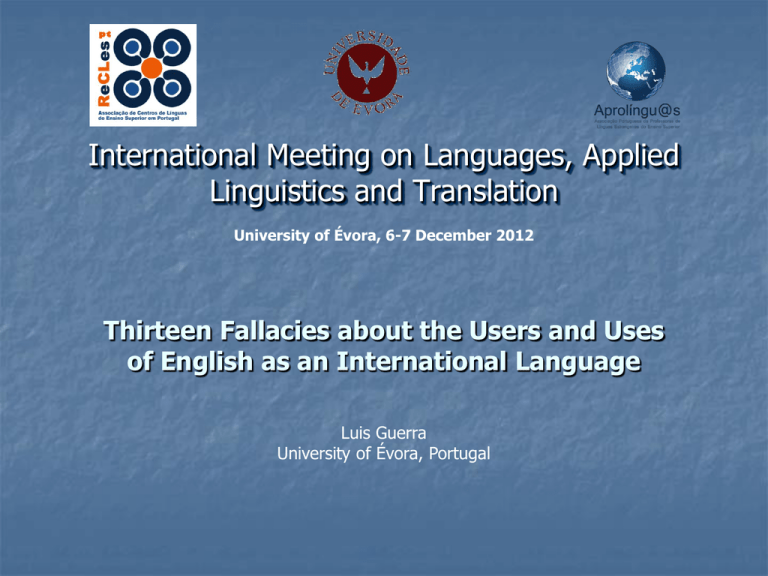
International Meeting on Languages, Applied Linguistics and Translation University of Évora, 6-7 December 2012 Thirteen Fallacies about the Users and Uses of English as an International Language Luis Guerra University of Évora, Portugal Thirteen Fallacies about the Users and Uses of EIL Structure of presentation: 1. English as an International Language (EIL) 2. Demographic and socio-political models describing EIL 3. EIL as cross-cultural communication 4. Is EIL a language variety? 5. Teaching EIL 6. Kachru’s ‘Six fallacies about the Users and Uses of English’ 7. Thirteen fallacies about learning and using EIL 8. Conclusion Thirteen Fallacies about the Users and Uses of EIL 1. English as an International Language (EIL) “that English in all its linguistic and sociolinguistic aspects which is used as a vehicle for communication between non-native speakers only, as well as between any combination of native and non-native speakers” (Campbell et al., 1983) 2. Demographic and socio-political models describing EIL Barbara Strang (1970) R. Quirk, S. Greenbaum, G.Leech, J. Svartvik (1972) Braj B. Kachru (1985) A-speakers ENL speakers Members of the Inner Circle B-speakers ESL speakers Members of the Outer Circle C-speakers EFL speakers Members of the Expanding Circle Thirteen Fallacies about the Users and Uses of EIL 3. EIL as cross-cultural communication “EGL means English used as a medium of communication in all sorts of communication contexts and for many different purposes for instance, in written academic discourse or by a Frenchman talking to a Greek waiter ordering a pizza in an Italian restaurant in Norway” (Gnutzmann, 1999) 4. Is EIL a language variety? “[EGL] is not particularly a formal-linguistic phenomenon, it instead refers to contexts of use definable by extralinguistic factors such as the relationship between speaker and hearer, the time and place of communication, the purpose and topic of communication, etc” (Gnutzmann, 1999) Thirteen Fallacies about the Users and Uses of EIL 5. Teaching EIL “Cultural topics relating to countries where English is spoken as a native language, particularly the United Kingdom and the United States, have to be complemented by topics dealing with other parts of the world in order to do justice to the global use of English in classroom teaching” (Gnutzmann, 1999) “A stronger orientation towards social, economic, scientific and technological topics with an international or global dimension would seem an appropriate measure in view of the global dimension of English” (Gnutzmann, 1999) “Teaching materials should be drawn from all the various English-using communities, not only L1 communities, so as to introduce students to the different manners of speaking English and to build an attitudinal base of acceptance” (Baxter, 1991) Thirteen Fallacies about the Users and Uses of EIL 6. Kachru’s ‘Six fallacies about the Users and Uses of English’ Fallacy 1: That in the Outer and Expanding Circles, English is essentially learned to interact with native speakers of the language Fallacy 2: That English is necessarily learned as a tool to understand and teach American or British cultural values, or what is generally termed the Judeo-Christian traditions Fallacy 3: That the goal of learning and teaching English is to adopt the native models of English (the Received Pronunciation or General American) Fallacy 4: That the international non-native varieties of English are essentially “interlanguages” striving to achieve “native-like” character Fallacy 5: That the native speakers of English as teachers, academic administrators, and material developers provide a serious input in the global teaching of English, in policy formation and in determining the channels for the spread of the language Fallacy 6: That the diversity and variation in English is necessarily an indicator of linguistic decay; that restricting the decay is the responsibility of the native scholars of English and ESL programs Thirteen Fallacies about the Users and Uses of EIL 7. Thirteen fallacies about learning and using EIL Fallacy 1: BrE is the correct variety of English Fallacy 2: It’s important that students get as close as possible to a native-speaker accent Fallacy 3: It’s not important to know the differences between AmE and BrE Fallacy 4: We can only refer to the differences between AmE and BrE in advanced levels Fallacy 5: Students are expected to be consistent in one variety Fallacy 6: BrE is formal English; AmE is informal English Fallacy 7: It’s not important to spend time with EFL accents and cultures Fallacy 8: The English language belongs to the English people Thirteen Fallacies about the Users and Uses of EIL Fallacy 9: There’s no room or time for other native varieties and cultures other than British and American Fallacy 10: It’s more important to include cultural aspects of native countries than of non-native countries Fallacy 11: Students can only gain if they spend time in a native country Fallacy 12: Students will learn to make mistakes if they contact with ESL or EFL varieties Fallacy 13: It’s easier to understand a native speaker than a non-native speaker Thirteen Fallacies about the Users and Uses of EIL 8. Conclusion Native English as the norm and native speakers as norm providers: linguacentric and ethnocentric attitudes “A linguistic chauvinism, or if you will, ethnocentricity, is so deeply rooted, not only in British culture, but also in the minds and hearts of a large number of language teachers working abroad, that many of the people who embrace such bias find it difficult to accept that other varieties of English, for some learners, are better choices for the educational model in the teaching of English as a foreign or second language” (Modiano, 1999) Thirteen Fallacies about the Users and Uses of EIL 9. References Baxter, J. 1991. ‘How should I speak English? American-ly, Japanese-ly, or internationally?’ in Brown, A. (ed.) 1991: op. cit. (53-71). Brown, A. (ed.) 1991. Teaching English Pronunciation: a book of readings. London: Routledge. Campbell, D., P. Ekniyom, A. Haque, and L. E. Smith. 1983. ‘English in international settings: problems and their causes’ in Smith, L. E. (ed.) 1983: op. cit. (35-47). Smith, L. E. (ed.) 1983. Readings in English as an international language. Oxford: Pergamon Press. Gnutzmann, C. 1999. ‘English as a global language: Perspectives for English language teaching and for teacher education in Germany’ in C. Gnutzmann (ed.) 1999: op. cit. (157-169). Gnutzmann, C. (ed.) 1999. Teaching and learning English as a Global Language.: native and non-native perspectives. Tübingen: Stauffenburg-Verlag. Guerra, L. 2009. Teaching and Learning English as an International Language in Portugal: Policy, practice and perceptions. Saarbrucken: VDM Verlag Dr. Muller. Kachru, B. B. 1992. ‘Teaching World Englishes’ in B. B. Kachru (ed.) 1992: op. cit. (355-365). Kachru, B. B. (ed.) 1992. The Other Tongue: English across Cultures. Urbana & Chicago: University of Illinois Press. McArthur, T. 1998. The English Languages. Cambridge: Cambridge University Press. Modiano, M. 1999. ‘Standard English(es) and educational practices for the world’s lingua franca’ in English Today 60: 3-13.



